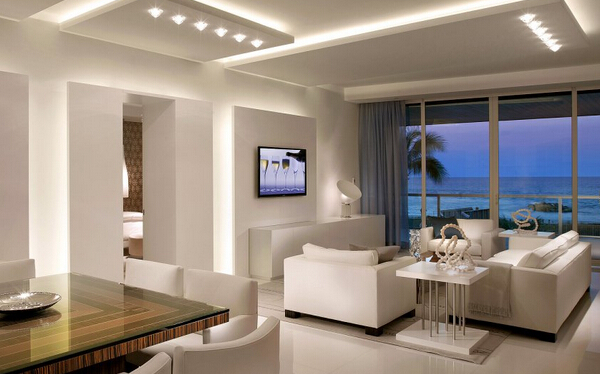An Introduction to Color Uniformity and Consistency
We are all born as wonderful detectors of light, intuitively seeing differences in color and brightness. Lighting professionals know that people respond emotionally to light and color, and use its consistency to draw us in, like moths to a glowing light.
Measuring color with the MacAdam Ellipse
Most of human sensory information is visual, coming to us through reflected light. Color consistency describes the non-variation in color from light source to light source, and fixture to fixture. We often don’t realize that we are influenced by the uniformity of color, but we always respond to it.
Let’s say you drive by two gas stations. Station A is illuminated throughout by bright white LEDs, while Station B’s lights vary from yellow to white and one panel is dim. You will likely go to Station A because its color consistency feels comforting and high quality, even if you aren’t conscious of that decision.
The difference in color between two lights is defined by an industry-specific standard called the MacAdam Ellipse. Each time the human eye can detects a color shift, it is measured as a MacAdam Ellipse step. In a range of 7 steps, the smaller the step, the more consistent lights are in color.
Matching colors on the blackbody curve
Color matching looks for the color consistency between light sources. Light appears white as it runs along a blackbody curve through the center of the color spectrum. When phosphor-based sources like LEDs vary from the blackbody, that variation is referred to as a tint. Light sitting above the blackbody curve has a green or yellow tint, and light below has a blue or pink tint. Color points that are plotted close together on the blackbody curve appear to match.
Seasoned manufacturers create products with a tighter distribution of color points and less variation in tint. This results in smaller MacAdam Ellipses, satisfied lighting specifiers and, most importantly, a great user experience.
Light sources with color points that do not match are less effective. Back at Station B, the outside canopy is lit with white LEDs, all 4000K, from the same brand and manufacturer. But one panel has a green tint, the next panel is yellowish, and the third is a little pink. These unmatched tints trigger the emotional discomfort that drives you to the beautifully matched white lights of Station A.
Impacting color with lighting optics
Beyond the light source, the optical components of a fixture can impact the tint. How the luminaire is designed optically—the amount of light it transmits, absorbs or reflects—will change the nature of its color point.
Station A gets its appealing consistency using identical white LEDs that are 2-step MacAdam Ellipse. But suppose those LEDs are placed in different fixtures. One fixture has a reflector with high reflectivity so only miniscule amounts of light get absorbed and the color point doesn’t change. The other fixture uses a diffuser made of green glass, which might absorb different spectrums of light and affect the color point of the fixture.
Once fixtures are designed with different optics, their LEDs get a warmer or cooler tint and the seamlessness of the system is gone. Lighting developers, manufacturers and specifiers must work together to preserve the consistency of color and holistically improve the consumer experience—and keep drawing us into the lights.


